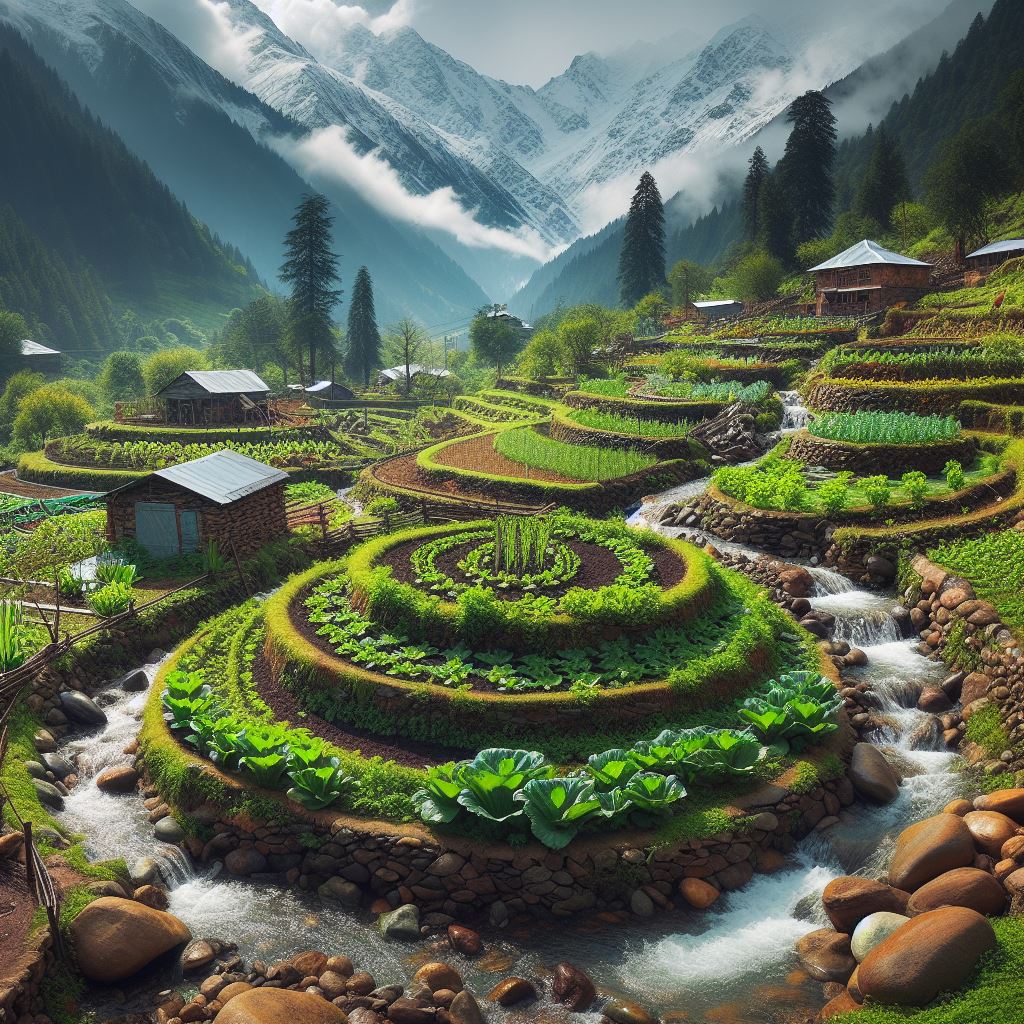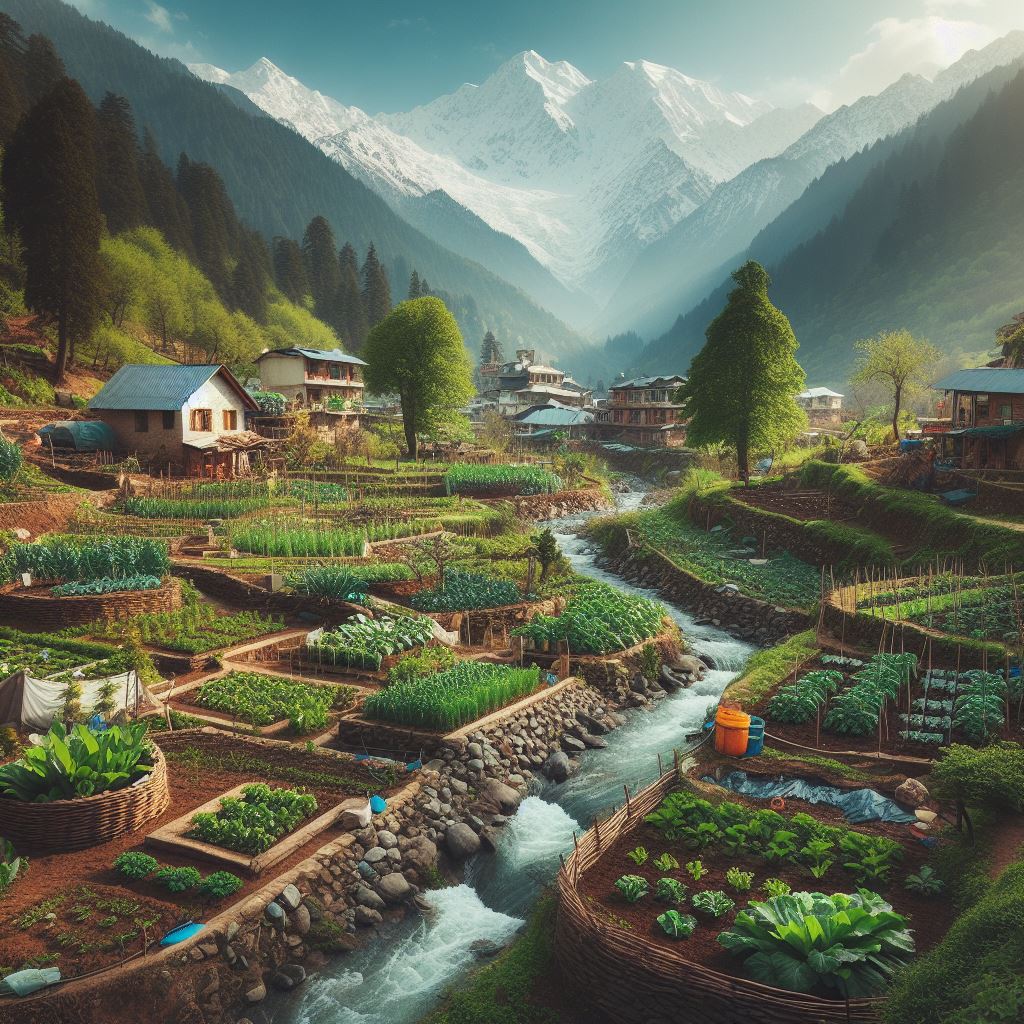Imagine waking up to the gentle chirping of birds, stepping outside to the vibrant hum of a thriving ecosystem, and plucking fresh, organic fruit from your own backyard. This isn’t a utopian dream; it’s the reality of permaculture, a design system that mimics nature’s interconnectedness to create self-sustaining, abundant landscapes.
But before you grab your shovel, take a moment. Look around your land in Palampur, Himachal Pradesh. What kind of story does it tell? Is it a sun-drenched slope or a fertile valley? Does the wind whisper through bare branches or rustle lush leaves? Understanding your unique ecosystem is the first step in building a thriving permaculture haven.
Ask yourself:
- What is the soil type? Clayey, sandy, or loamy? Each type has its own strengths and weaknesses, and understanding yours will guide your plant choices.
- What is the existing vegetation? Native trees, shrubs, and flowers offer clues about the natural balance of the ecosystem. Consider incorporating them into your design.
- How much sunlight does each area receive? This will determine which plants will thrive in different parts of your land.
- What is the water source and drainage like? Efficient water management is crucial in permaculture. Observe how water flows naturally on your land and design accordingly.

Now, let’s explore the diverse roles trees play in this vibrant tapestry:
- Windbreak warriors: These sturdy sentinels shield your land from harsh winds, protecting delicate plants and reducing soil erosion. Consider planting Himalayan pines, Deodar cedars, or even native bamboos.
- Nitrogen fixers: These unsung heroes enrich your soil by converting atmospheric nitrogen into a usable form for plants. Explore planting legumes like Albizia chinensis, Sesbania grandiflora, or even the Himalayan Alder.
- Fruity bounty: Imagine biting into a juicy apple, a plump peach, or a tangy plum grown by your own hand. Choose fruit trees suited to Palampur’s climate, like apples, pears, plums, apricots, and even cherries.
But the story doesn’t end there. Permaculture is a symphony of diverse elements working together. Flowers attract pollinators, shrubs offer habitat for beneficial insects, and vegetables complete the cycle of self-sufficiency. By understanding your land and choosing the right trees, you become an active participant in creating a thriving ecosystem that not only nourishes you but also benefits the environment.
Remember, building a permaculture paradise is a journey, not a destination. Embrace the process of learning, observing, and adapting. With each step, you’ll breathe new life into your land, creating a legacy that resonates with the spirit of Palampur and the wisdom of nature itself.
